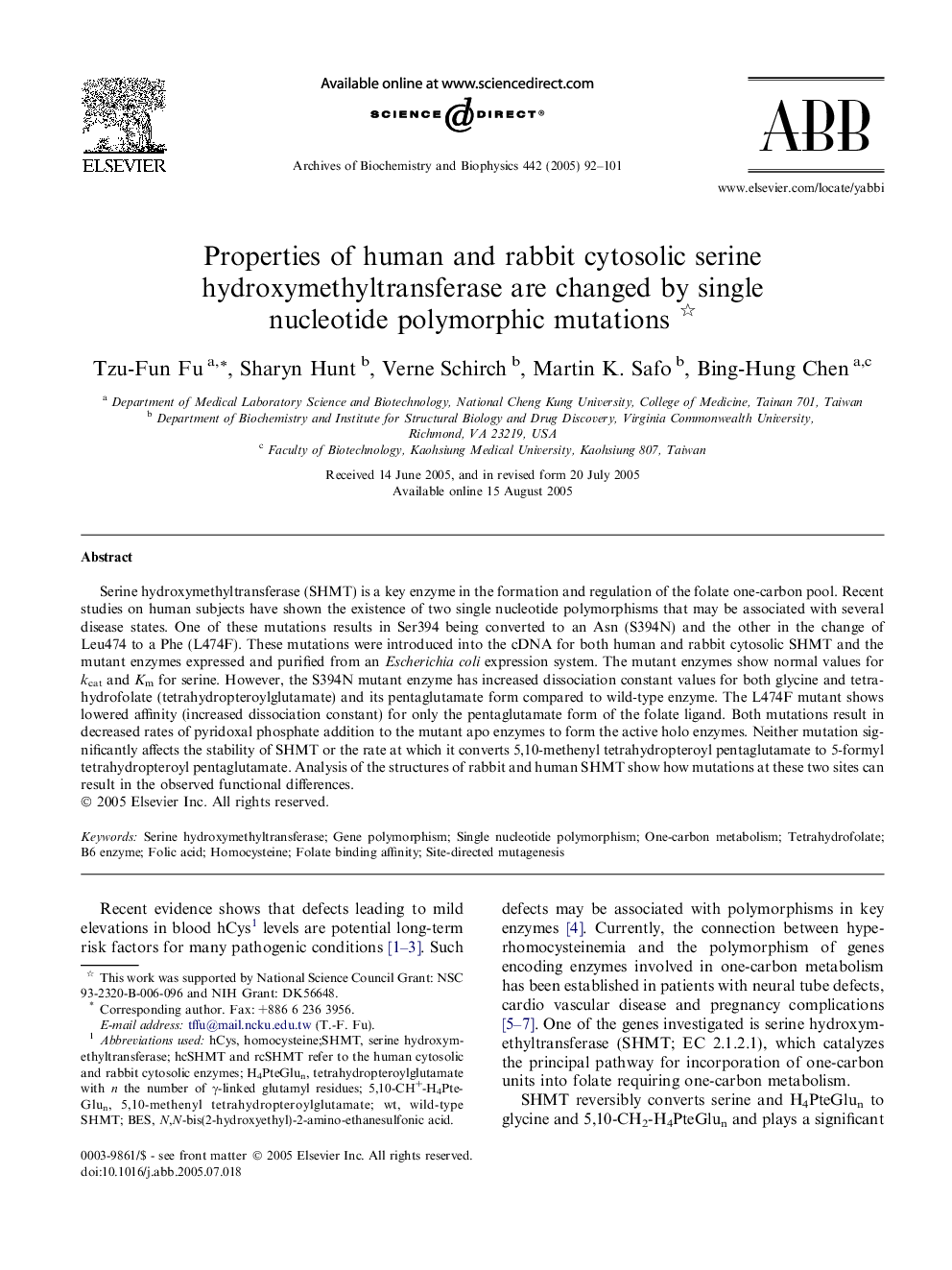| Article ID | Journal | Published Year | Pages | File Type |
|---|---|---|---|---|
| 9882113 | Archives of Biochemistry and Biophysics | 2005 | 10 Pages |
Abstract
Serine hydroxymethyltransferase (SHMT) is a key enzyme in the formation and regulation of the folate one-carbon pool. Recent studies on human subjects have shown the existence of two single nucleotide polymorphisms that may be associated with several disease states. One of these mutations results in Ser394 being converted to an Asn (S394N) and the other in the change of Leu474 to a Phe (L474F). These mutations were introduced into the cDNA for both human and rabbit cytosolic SHMT and the mutant enzymes expressed and purified from an Escherichia coli expression system. The mutant enzymes show normal values for kcat and Km for serine. However, the S394N mutant enzyme has increased dissociation constant values for both glycine and tetrahydrofolate (tetrahydropteroylglutamate) and its pentaglutamate form compared to wild-type enzyme. The L474F mutant shows lowered affinity (increased dissociation constant) for only the pentaglutamate form of the folate ligand. Both mutations result in decreased rates of pyridoxal phosphate addition to the mutant apo enzymes to form the active holo enzymes. Neither mutation significantly affects the stability of SHMT or the rate at which it converts 5,10-methenyl tetrahydropteroyl pentaglutamate to 5-formyl tetrahydropteroyl pentaglutamate. Analysis of the structures of rabbit and human SHMT show how mutations at these two sites can result in the observed functional differences.
Keywords
Related Topics
Life Sciences
Biochemistry, Genetics and Molecular Biology
Biochemistry
Authors
Tzu-Fun Fu, Sharyn Hunt, Verne Schirch, Martin K. Safo, Bing-Hung Chen,
